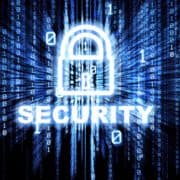Gartner Identifies the Top Cybersecurity Trends for 2024
Trend 2: Cybersecurity Outcome-Driven Metrics: Bridging Boardroom Communication Gap. “According to Gartner, ODMs are central to creating a defensible cybersecurity investment strategy, reflecting agreed protection levels with powerful properties, and in simple language that is explainable to non-IT executives. This provides a credible and defensible expression of risk appetite that supports direct investment to change protection levels.”
Trend 3: Security Behavior and Culture Programs Gain Increasing Traction to Reduce Human Risks. “Security leaders recognize that shifting focus from increasing awareness to fostering behavioral change will help reduce cybersecurity risks. By 2027, 50% of large enterprise CISOs will have adopted human-centric security design practices to minimize cybersecurity-induced friction and maximize control adoption. Security behavior and culture programs (SBCPs) encapsulate an enterprisewide approach to minimizing cybersecurity incidents associated with employee behavior.”
Trend 4: Resilience-Driven, Resource-Efficient Third-Party Cybersecurity Risk Management. “Gartner recommends security leaders enhance risk management of third-party services and establish mutually beneficial relationships with important external partners, to ensure their most valuable assets are continuously safeguarded.”
Trend 5: Continuous Threat Exposure Management Programs Gain Momentum. “By 2026, Gartner predicts that organizations prioritizing their security investments based on a CTEM program will realize a two-thirds reduction in breaches. Security leaders must continuously monitor hybrid digital environments to enable early identification and optimal prioritization of vulnerabilities to help maintain a hardened organizational attack surface.”
Trend 6: Extending the Role of Identity & Access Management (IAM) to Improve Cybersecurity Outcomes. “Gartner recommends security leaders focus on strengthening and leveraging their identity fabric and leverage identity threat detection and response to ensure IAM capabilities are best positioned to support the breadth of the overall security program.”



Leave a Reply
Want to join the discussion?Feel free to contribute!